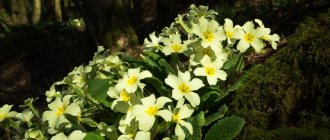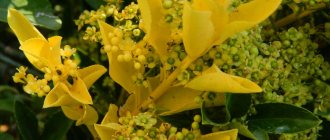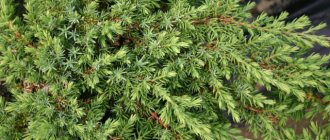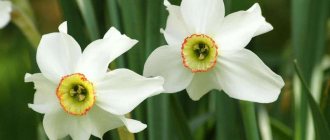Willow (willow) in the garden
No matter how warm the winter turns out to be, nature awakens only in mid-April, when spring steps more and more confidently across the earth. The first to greet her approach in March are snowdrops and woodlands, and later, in April, primrose and coltsfoot. With their gentle heads, directed towards the sky or, conversely, bowed to the ground, they seem to be asking for the warm season to come as soon as possible and for everything around to be dressed in lush attire.
As if hearing the friendly call of primroses, the sun shines brighter every day, the air warms up, the sky becomes higher and brighter. And although the gardens have already awakened from deep sleep, the trees and bushes still stand motionless, as if wanting to make sure that the cold has gone away forever.
The good news of the beginning of a new life in nature is carried by the willow, a plant of the willow family. She, like many of her closest relatives, decorates her bare twigs with tiny, soft, cotton-like pads of future inflorescences in anticipation of the lush growth of young greenery.
Botanical description
Willow is a deciduous tree and is one of the most common types of vegetation in the northern hemisphere. Willow is considered an ancient plant, because some of its species grew on Earth even before the Ice Age. In Russia, willow has several names:
- willow;
- broom;
- willow;
- willows and so on.
Weeping willow or Babylonian willow belongs to woody plants of the Willow family. The lifespan of willow is no more than 100 years.
Wood appearance
The appearance of the willow may vary depending on the species, but we will look at a detailed description of the weeping willow. The height of the average tree is 16-20 meters.
The willow crown consists of long hanging branches. The branches themselves are a brilliant red or yellow-green hue.
The leaves have an oblong shape, they grow up to 10-16 cm in length and up to 2 cm in width. Along their entire length, the leaves have different colors: at the base they are dark green, at the end they are bluish-green, and their edges are grayish.
The weeping willow has what are called catkins, which appear either before or after the leaves appear. Earrings grow on small branches and are ovoid in shape. Their color is yellow-green.
Root system, fruits and flowers
The root system is well developed and can even strengthen the soil. The higher the moisture in the soil, the less developed the root system will be.
Willow seeds are located in a small fruit that has the shape of a box. The seeds are small and covered with slight fluff.
Weeping willow flowers are white and yellow. The tree blooms in late spring or early summer.
Another willow
Some botanists consider the common willow to be a subspecies of I. wolfberry - Salix daphnoides. These species are similar and both trees have a second name - willow, only the distribution area of I. volcnikova is Europe. In the USA and Russia it grows only as a cultivated plant to strengthen sandy soils and for decorative purposes. Its other names: yellow willow, pomerania, yellow shelyuga.
Photo 5: by summer, leaves appear on I. volchnikova, but silky hairs are no longer noticeable on the flower buds.
This species also has a lemon-colored bark on the inside and a bitter taste. But young shoots, unlike the species described above, look different: they are thicker and shorter, white-silky. And fresh leaves are also slightly hairy, denser and wider than those of V. red. The height of the yellow willow tree is greater: according to descriptions it reaches 15 meters.
Types of weeping willow
Weeping willow, like any other plant, has certain types, which can sometimes differ from each other. Below we look at common types of weeping willow.
Weeping white willow
Weeping white willow is a frost-resistant large tree reaching 25 meters in height. Young trees have a narrow crown and over time it “blooms” and becomes spreading. The main shoots grow straight up, but the shoots located on the sides hang down. Willow leaves, at first, have a silvery color, and over time they become a little greenish. It is photophilous, but can also tolerate being in the shade.
Yellow weeping willow
Yellow willow is a tree that grows quite quickly and mainly in sunny places. The leaves are medium in size - approximately 12 cm. It tolerates winter well and can grow at temperatures of -40. The shoots are thin and flexible, have a light color, which is why willow has this name. Not picky about soil.
Dewy willow
Dewy willow is also called Shelyuga Siberian. The tree grows to medium size, approximately 8 - 12 meters. Grows along river banks. The leaves are green, yellowish inside. The branches are dark brown in color and may have a coating.
Yellowbark willow
Yellowbark willow (golden) is a large plant that reaches 20 m in length. It is not picky about soil and can grow even in infertile soil. It grows best in summer, but also tolerates winter calmly.
Willow whole leaf
Whole-leaved willow is a decorative dwarf species. It has a beautiful appearance, so it is often used when decorating gardens. All-leaved willow is considered a low-growing variety, since its size barely reaches 3 m. During flowering, it has a smell like hyacinth. Begins to bloom at the end of May. Looks beautiful both alone and together with other plants.
Compositions with willows
Hedge
You can create a dense and beautiful hedge from willow by planting plants at a distance of 1.5 m from each other. It is best to use shrub species for this.
Alley
Willows are also used to create shady alleys. They are planted on both sides, along the path at intervals of 2 m. Approximately in the 3rd year, the crowns of the trees will close and begin to intertwine with each other, creating an openwork umbrella over the heads of people passing from below.
Arch
Using flexible willow branches, you can intertwine them with each other and create beautiful arches in front of the entrance or divide the space on the site with such an arch.
Rockery
Dwarf forms of willow are planted in rockeries and various compositions with streams and fountains.
Tapeworm
Willow also looks gorgeous as a tapeworm.
A huge tree in the middle of the lawn or surrounded by various bushes.
Photo: Willow surrounded by bushes Near the pond
Most often, willows are planted along the banks of reservoirs. There they look very organic and perfectly complement the landscape composition.
Willow in the shape of a ball
Here is the work of professionals who cut the perfect balls from willow. It looks very impressive, and the most important thing is that, if desired, anyone can do this on their own plot, you just need to choose the right variety and type of willow.
The spherical shape of the Willow in the photo below, first before pruning, then after.
Photo: Willow before pruning
Under natural conditions, spherical Willow grows in the shape of a ball, thanks to this property it is formed into beautiful, chiseled shapes. But for this you need to start shaping from an early age.
Photo: Willow after pruning
Planting and care
Of course, both beginners and experienced gardeners need to know the description of the plant and what varieties are most often found, but it is much more important to know all the intricacies of planting a tree and caring for it.
Reproduction and planting of weeping willow
The very first thing you need to pay attention to before planting is the soil. As already mentioned, willow can grow in any soil, but it will work best if it is planted in loamy or sandy soil. The soil moisture can also be any, but it is preferable to plant the tree in moist soil.
In the wild, willow reproduces independently by seeds, but in order to grow a tree in their own area, gardeners use seedlings or cuttings. As a rule, there are almost no questions about growing weeping willow seedlings, because it is easy to buy a ready-made seedling and plant it in suitable soil. But we need to talk about the cutting method in more detail.
Cuttings
Cuttings must be prepared in the winter season. It is best to choose the middle part of the shoots, whose age does not exceed 2 years.
Here are some more recommendations for preparing and growing cuttings:
- the length of the cutting should be about 30 cm, but no more;
- they must be planted in a greenhouse, greenhouse or warm room;
- In order for the seedling to quickly grow stronger, you need to frequently water the willow and loosen the soil. You can use various fertilizers to form the root system;
- After the cutting has already become stronger, and this will happen quite quickly, there is no need to replant it in open ground. Let it spend one winter in a warm room, but after a year you can safely replant it.
Tree care
Types of tree care
| Care | Description |
| Watering | In summer and during hot weather, willow requires abundant watering. If the species is dwarf, then it is recommended to spray the crown itself during hot weather. Weeping willow must be watered daily in summer. In winter, you can limit yourself to one watering per week. |
| Top dressing | You need to feed the plant only at first and immediately after planting it in the ground (and even then, it is not necessary to do this). In good soil, willow will grow without additional fertilizers. |
| Trimming | Not all willows can be pruned due to their growth. But, if you still decide to prune the willow, then this must be done in the spring. Timely pruning not only improves the appearance, but also has a positive effect on the health of the tree. |
Diseases and pests
It is almost impossible to protect a tree growing in open ground from pests and diseases. Therefore, it is worth knowing in advance what problems you may encounter when growing and caring for weeping willow, and how to deal with pests and diseases.
The most terrible diseases include:
- white heart-shaped rot (affects the trunk from the inside);
- brown or black leaf spot;
- crown gall;
- powdery mildew;
- willow scab and so on.
In order to avoid attacks by pests and the development of various diseases, it is worth inspecting the tree in a timely manner: removing dry leaves, treating the tree trunk, watering only when necessary.
You can protect yourself from insect attacks using special wood treatment, which can be purchased at flower shops.
Meaning and Application
The weeping willow is not just a beautiful tree, but also a useful tree. Let's list some of its useful properties:
- the plant is actively used as a fence; it can provide shade to a large area;
- in infertile soil, willow takes root and improves it, thereby creating all the conditions for the growth of more fastidious plants;
- twigs from weeping willow (vine) are used to create wicker furniture;
- Willow wood is also very popular among woodworkers.
Application in medicine
Willow bark has the following effects on the body:
- antipyretic
- anti-inflammatory
- disinfectant
- choleretic
- diuretic
- hypotensive
- antiseptic
- astringent
- sweatshop
- antifever
- hemostatic
Dried willow bark is included in various medicinal preparations for internal and external use.
Indications for external use of willow bark:
- bedsores
- dermatological diseases
- boils, suppuration
- diaper rash
Indications for taking willow bark orally:
- gastritis, colitis
- tuberculosis
- internal bleeding (stomach, uterine)
- fever
- typhus
- rheumatic attacks
- gynecological diseases
- dysentery
- diseases of the nervous system
- pathologies of the upper respiratory tract
- gout
- sore throat, laryngitis, gingivitis, stomatitis
Use in landscape design
Weeping willow can decorate any garden or vegetable garden that has a small river or artificial pond. Wood looks great next to water, which is why landscape designers use it for this purpose.
Decorative and dwarf species of weeping willow can become an excellent decoration, not only in the garden, but also at home.
Weeping willow is a powerful tree that fits into any design and not only enchants with its beauty, but also creates all the favorable conditions for comfortable living and growing new plants.
Planting a plant in open ground
The globular willow differs from most plants not only in its unpretentiousness, but also in its excellent survival rate in places where most plants will die. Thus, the spherical willow loves moisture and will take root well in places where groundwater accumulates. It's all about the incredible resistance of the willow root system to the effects of an excessively humid environment. Accordingly, willow roots will not rot even if there is standing water in the soil.
Since willow loves light very much, it is advisable to choose a bright place for planting in open ground. Immediately before planting, prepare holes about 0.4 m deep and about 0.5 m wide. 1/3 of the hole is filled with a nutrient mixture consisting of compost, peat, and nutrient soil. The period for planting willow is quite wide: seedlings can be planted in open ground from mid-spring to mid-autumn. The main condition for successful planting of willow is not very dry roots and a ball of earth.
Combination of willow with other plants
Thanks to its original, sophisticated appearance, spherical willow is actively used as a decorative element in landscape design. The spherical willow is excellent for landscaping both parks and avenues, as well as private garden plots.
Globular willow in landscape design
With proper care and proper placement among other garden plants, globular willow can become a real work of art. The plant looks great in tandem with other shrubs.
It is often used in combination with bonsai when decorating Japanese-style gardens. It can be used as a single plant, since over time the branches of the tree become brittle and, falling, create a lush original halo around the tree.
Excellent decoration can be obtained by growing globular willow near ponds. Decorative stones are usually laid out in front of the tree, and the circle around the trunk is decorated with ground-blooded flowers.
Advice. Ball willow is an excellent plant for strengthening slopes. Usually, for this purpose, varieties with a crown height of at least 3 m are planted.











